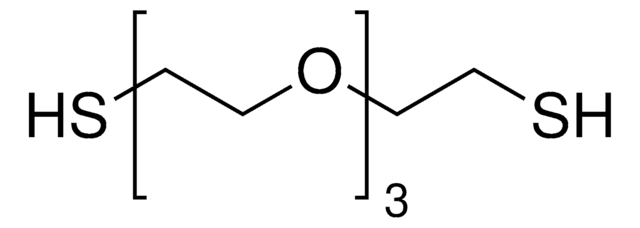55417
1,2-propandiolo
analytical reference material
Sinonimo/i:
Propilenglicole
About This Item
Prodotti consigliati
Grado
analytical reference material
Livello qualitativo
Densità del vapore
2.62 (vs air)
Tensione di vapore
0.08 mmHg ( 20 °C)
Saggio
≥98.5% (qNMR)
≥99.5% (GC)
Temp. autoaccensione
779 °F
Durata
limited shelf life, expiry date on the label
Limite di esplosione
12.5 %
tecniche
HPLC: suitable
gas chromatography (GC): suitable
Impurezze
≤0.5% water
Indice di rifrazione
n20/D 1.432 (lit.)
n20/D 1.432-1.434
P. ebollizione
187 °C (lit.)
Punto di fusione
−60 °C (lit.)
Densità
1.036 g/mL at 25 °C (lit.)
applicazioni
cleaning products
cosmetics
flavors and fragrances
food and beverages
forensics and toxicology
personal care
pharmaceutical (small molecule)
Formato
neat
Stringa SMILE
CC(O)CO
InChI
1S/C3H8O2/c1-3(5)2-4/h3-5H,2H2,1H3
DNIAPMSPPWPWGF-UHFFFAOYSA-N
Cerchi prodotti simili? Visita Guida al confronto tra prodotti
Applicazioni
Codice della classe di stoccaggio
10 - Combustible liquids
Classe di pericolosità dell'acqua (WGK)
WGK 3
Punto d’infiammabilità (°F)
217.4 °F - closed cup
Punto d’infiammabilità (°C)
103 °C - closed cup
Scegli una delle versioni più recenti:
Certificati d'analisi (COA)
Non trovi la versione di tuo interesse?
Se hai bisogno di una versione specifica, puoi cercare il certificato tramite il numero di lotto.
Possiedi già questo prodotto?
I documenti relativi ai prodotti acquistati recentemente sono disponibili nell’Archivio dei documenti.
Il team dei nostri ricercatori vanta grande esperienza in tutte le aree della ricerca quali Life Science, scienza dei materiali, sintesi chimica, cromatografia, discipline analitiche, ecc..
Contatta l'Assistenza Tecnica.




